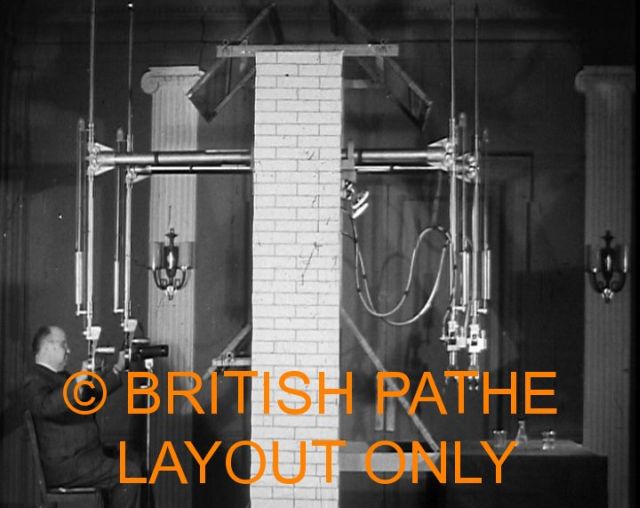↵
1948 GE Master-Slave Manipulator – John Payne
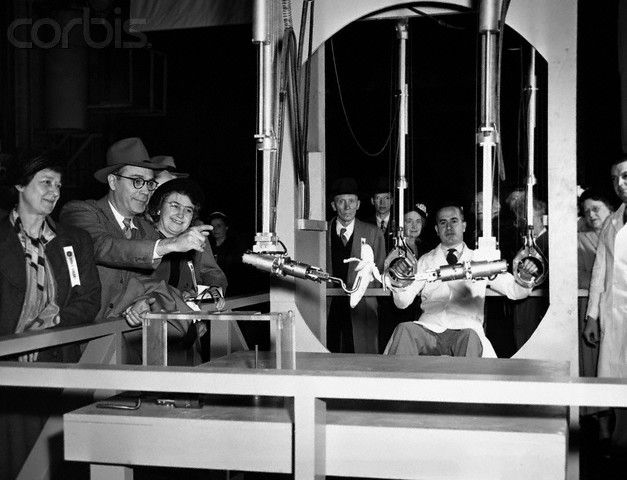

Patent number: 2476249 (see here)
Filing date: Nov 24, 1948
Issue date: Jul 1949

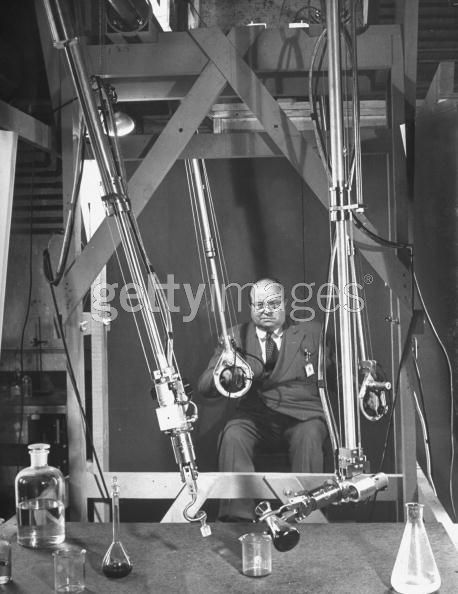
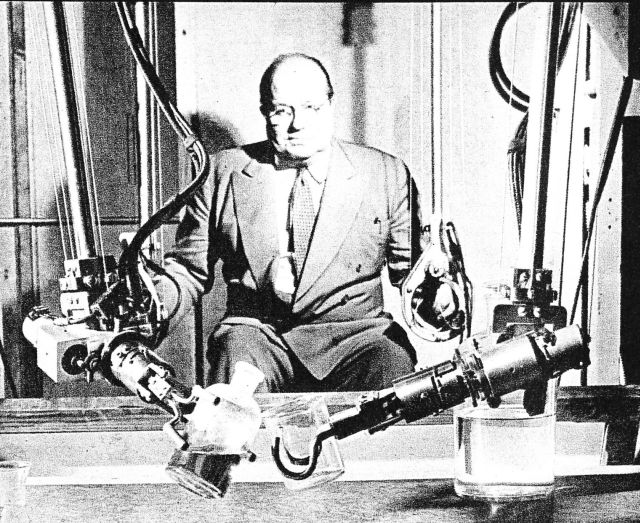
MECHANIX ILLUSTRATED, JUNE 1948
Mechanical Hands with Remote Control
The village blacksmith of Longfellow may have had "muscles like iron bands," but scientist John Payne of General Electric has done him one better; he has arms and hands made of steel, and what's more, he can operate his from the next room.
His device has an important function of course; with it he can handle remotely the hot, radioactive materials used in atomic research at Knolls Atomic Power Laboratory at Schenectady, NY. His "hands" can perform delicate chemical experiments, operate machine tools and do countless other tasks involving great dexterity. In use the metal manipulators extend over a wall impervious to the harmful radiations, and reach into the radio-active area to handle the material. The operator remains in a separate control room and atches the operation by means of mirrors.
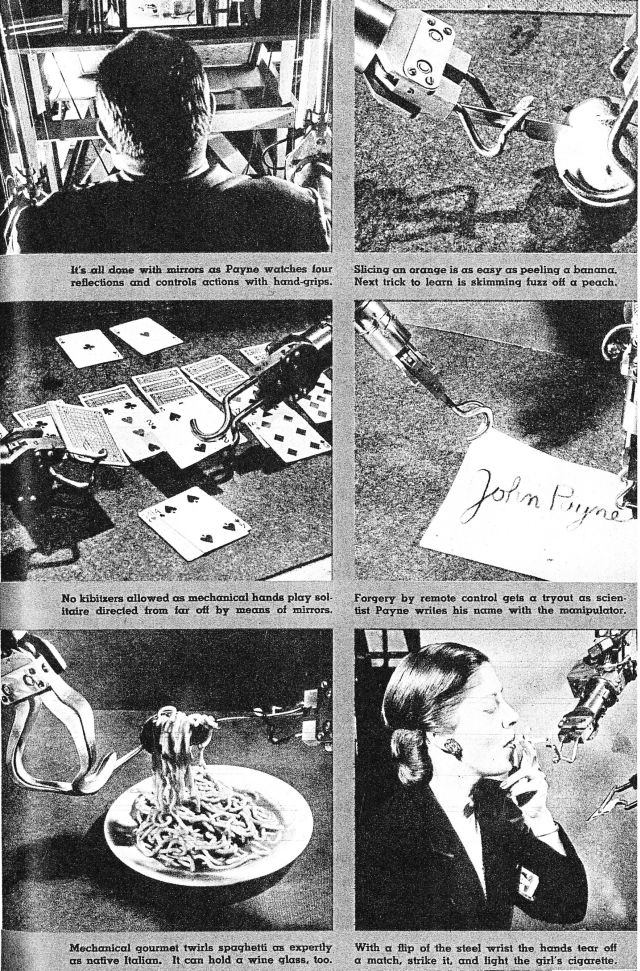
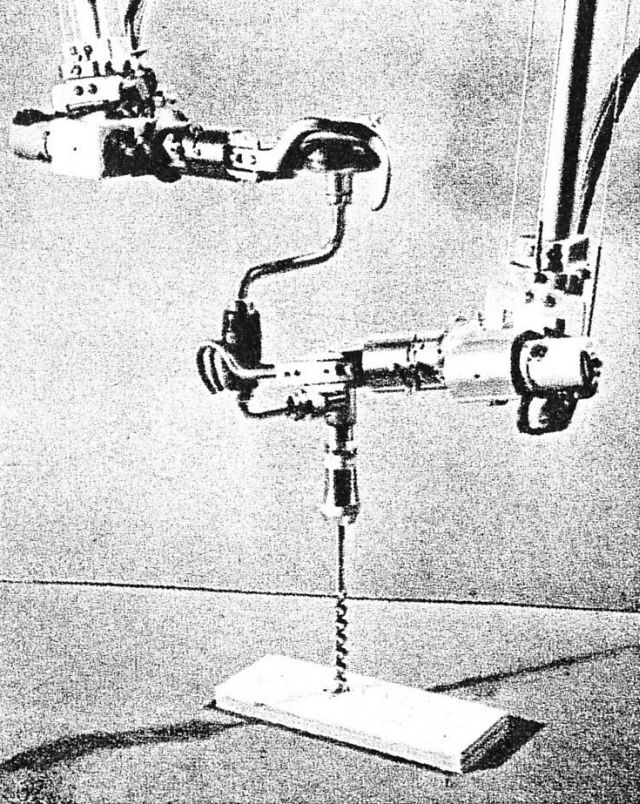
Dexterity showing a drill brace.
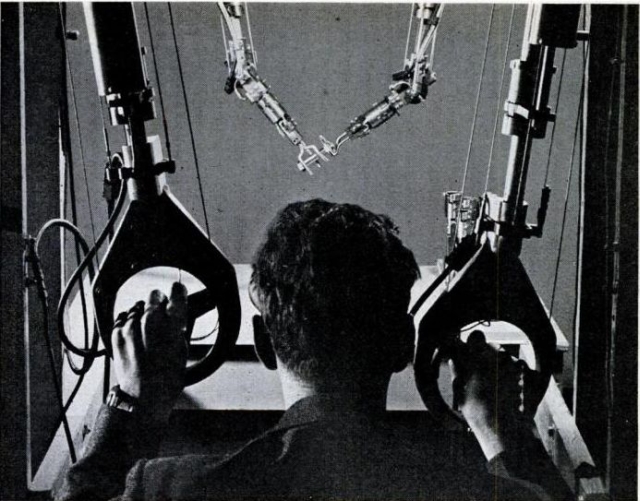
Operator yards away guides mechanical hands, without usual mirrors, in putting nut on bolt.
Seven-League Hands For Hot Atoms
PS Photos by Hobert Lushest
REMEMBER the sailor in the picture "The Best Years of Our Lives"—the boy who had lost his own arms but could do almost anything you can do with his "hooks"? That sailor's hooks are now a vital tool in atomic research. As the "hands" at the ends of long steel arms in General Electric's new remote manipulator, they reach over a high, thick wall to hold deadly radioactive "hot stuff"—picking it up, performing experiments with it, and operating tools on it —all at the command of a human operator sitting yards away safely behind the wall.
It all began last year when John Payne, GE research associate, toured the plutonium works at Hanford, Wash. He was impressed by the remotely controlled devices that handled intensely radioactive materials from behind shields. But he felt something was missing: there were many special-purpose devices, but no versatile gadget that could do all the jobs a man does with his hands. That night Payne went to a movie—you guessed it, "The Best Years of Our Lives." Back in Schenectady he started figuring. The result is a gigantic yet simply operated machine that can do the things human hands do. It runs machine tools, pours chemicals, fastens screws and bolts, even peels bananas. In every atomic laboratory from Berkeley to Brookhaven it is known as The Machine that Can Undress a Babe without Pinching.
For artist's conception of remote manipulator setting up dangerously radioactive material in lathe inside hot laboratory, turn to next page.
POPULAR SCIENCE, JUNE 1948

Sketch Shows Hands In Use
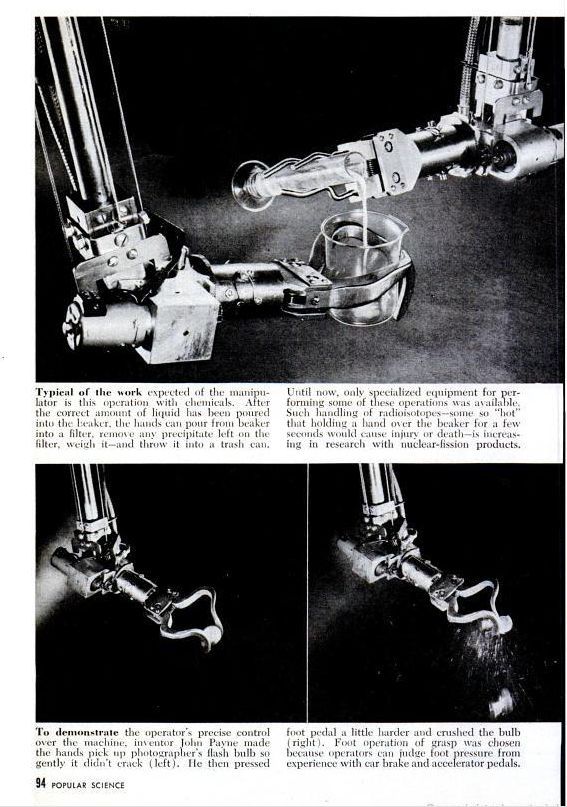

Source:Popular Science, June 1948

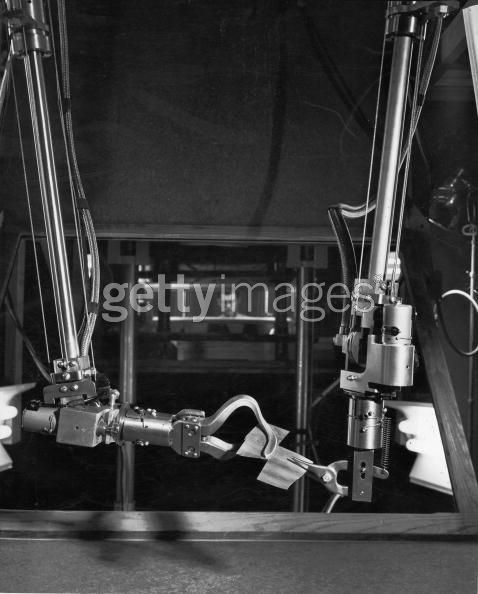
See other Early Teleoperators and Manipulators here.
